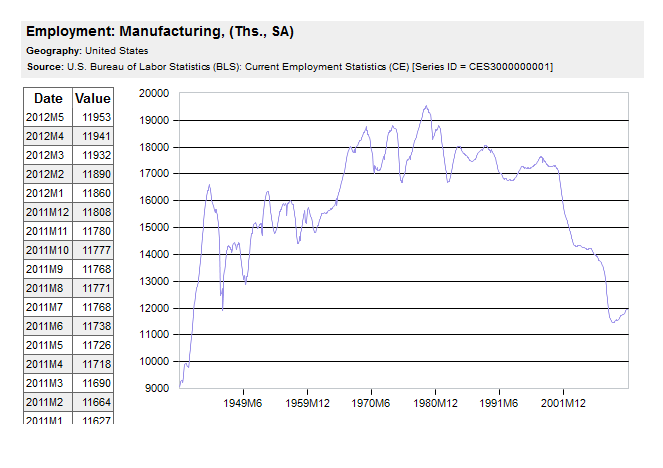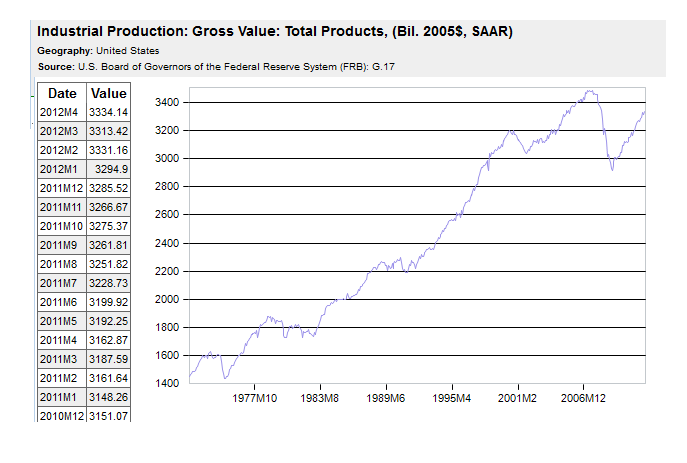Truthmatters
Diamond Member
- May 10, 2007
- 80,182
- 2,272
- 1,283
Follow along with the video below to see how to install our site as a web app on your home screen.

Note: This feature currently requires accessing the site using the built-in Safari browser.
Personally I found the graphic a bit of a muddle, but my guess is that their point is 1979 saw the all time high in US manufacturing employment--


For decades America's vibrant manufacturing sector provided poorly educated workers a bridge to the middle class. But today's plants need highly skilled workers who know their way around ultra-high tech machinery. On the factory floor of AMI, a Michigan-based maker of fuel cells, one can hear the future of manufacturing. It is very, very quiet. The loudest noise in the brightly lit factory is the beeping of a hydraulic lift used to replace lightbulbs overhead.
The contrast with traditional manufacturing is sharp: Almost no noise, no dirt, little physical effort. And requirements for workers are very different. "You've got to have the smart people that help build it from the bottom up," says AMI President Aaron Crum. "We don't forge things anymore. We use lasers to cut metal, we extrude ceramics, we do things that are different. And so because of it, we need a different labour force to make it happen."
Decades of losses
Manufacturing in the US is undergoing the same technological revolution that sent workers from agriculture to industry at the end of the 19th Century, says Lou Glazer of consulting group Michigan Future Inc. In the '50s, he says, factory work was a third of the work in America; now it's below 10%. Although manufacturing employment has ticked up in recent months, adding 30,000 jobs since March, the gains pale in comparison to the losses of the past decade. Three and half million manufacturing jobs have vanished in 10 years, bringing the current total to just under 12 million. As employment has plummeted, productivity has soared. Not for nothing does the US National Association of Manufacturers boast that American factory workers are "the most productive in the world".
About 30 minutes' drive from the AMI plant is the ghost of manufacturing past: Willow Run. It is an almost unfeasibly large plant that once turned out Liberator bombers, then Kaiser cars, then transmissions and car bodies for General Motors. Willow Run closed in 2010 when GM went bankrupt. Of the plant's five million square feet, one million has been cleared for sale. The rest of the factory is an astonishing reminder of what manufacturing used to be like. Hulking presses the size of three-storey houses gather dust, corridors stretch into the gloom seemingly without end, and the warm air is thick with the smell of machine oil.
'No diploma needed'